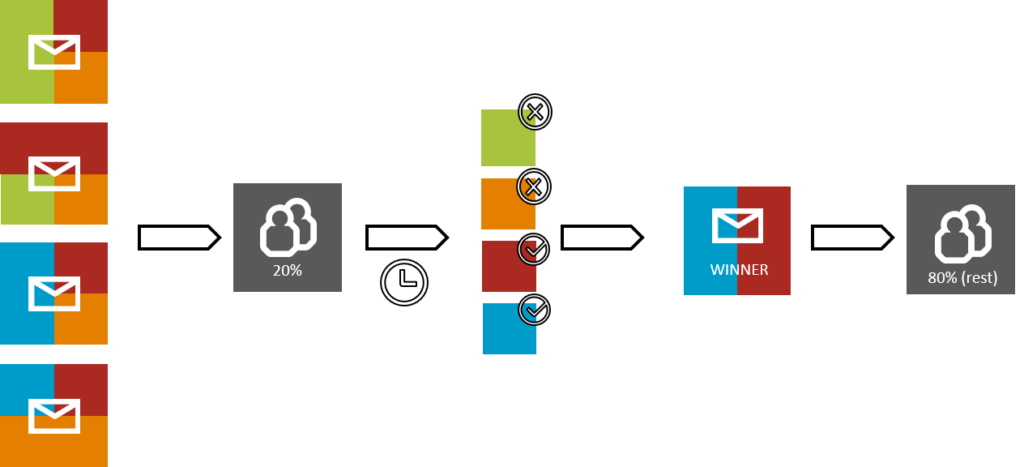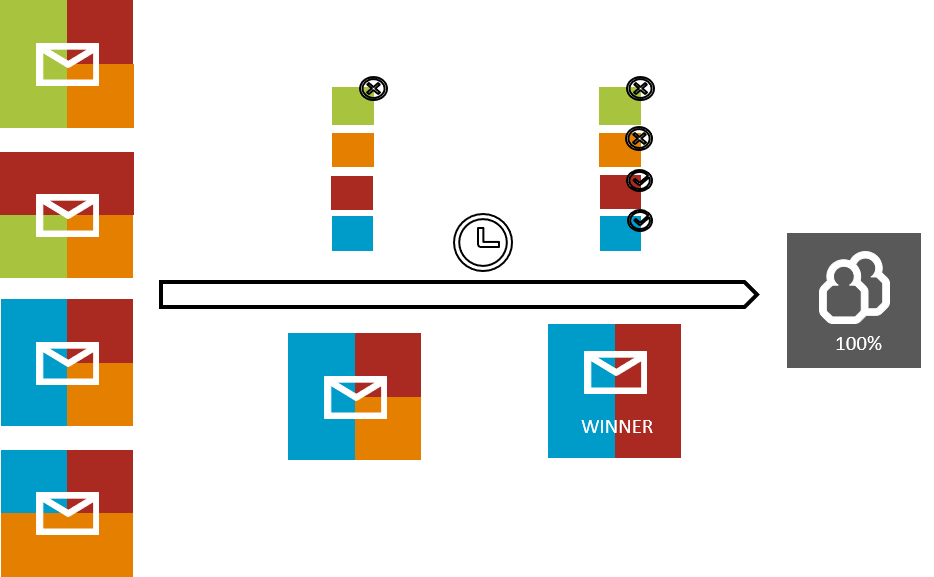Testing is one of the most effective optimisation methods in email marketing. Let us introduce you to various testing procedures, from simple to complex.
Split-Run (A/B-Tests)
The split run is a very simple test procedure. As the name suggests, you separate your distributor into two parts. One half receives variant A of your email, the other half receives variant B.
You can use the knowledge gained for future emails. Split runs usually only test one element, such as the subject line.
Additional tip: Send customers who have not responded to one variant the other variant again.

Sampling Pre-Test (A/B-Tests)
With sampling pre-test you only need about 20 percent of the distributor for testing (more or less depending on the distributor’s size). Variant A or B receives 10 percent each.
The remaining 80 percent receive the variant that worked better some time later. The great advantage of this type of testing is that you can use the better variant directly for the main distribution board.

Multivariate Test
In multivariate tests, not only one element is tested, such as a green or blue layout, but many different elements are tested at the same time and these elements are also tested independently of each other, for example: Subject line, font size, layout, different calls-to-action, etc.
This way you can test, for example, which combination of these elements works best. The variables are independent of each other, i.e. the font size, for example, is not related to the color scheme.

Real-time Multivariate Test
Multivariate also works in real-time. In this case, it is already checked during a running dispatch which of the tested elements work best and the sent email is adjusted live to the test results.
For example, if a customer opens an email two hours after sending, he may receive different elements (because they are already optimized) than a customer who opened shortly after sending.
